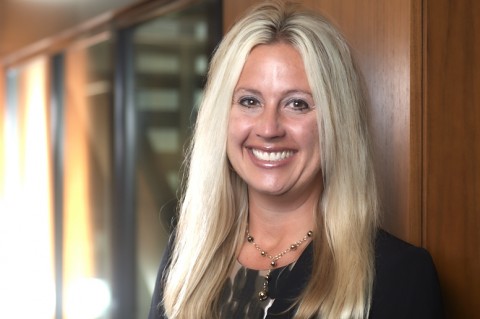After reflecting on the two years we spent at the Harvard Macy Institute Program for Educators in the Health Professions course as learners and teachers, it became more apparent that health professions educators cannot just talk about collaborative learning methods. Instead, we must figure out a way to incorporate these pearls into our everyday practice to promote effective teaching and learning throughout the medical education continuum. During our time at the course, we have seen that by weaving collaborative learning methods into the delivery of education, knowledge is fostered, teamwork is promoted, and a true excitement for learning new concepts occurs. One challenge that may impede us from implementing collaborative learning methods into our own teaching strategies is lack of time; however, to be the change agents that healthcare needs, we have a duty to better prepare our learners for their future role as healthcare providers. How do we do this? The answer may not be that difficult. In fact, by using collaborative learning methods, you may find that students develop a deeper understanding as they practice synthesizing and applying healthcare concepts.
As institutions implement vertical and horizontal models for health profession education, an opportunity to embrace collaborative learning methods is presented to us as faculty. As a clinical instructor in Allied Health and an assistant professor of medical education, we reflected on the course sessions and the collaborative learning methods utilized. How can we best utilize methods such as just-in-time teaching, team-based learning, think-pair-share, problem-based learning, case discussions, and the flipped classroom to enhance our teaching and positivity affect student learning within our own courses? Over our last two years at the course, it has crystalized for us that the educational principles taught in the program can be utilized in a variety of educational settings spanning undergraduate health professions education to graduate medical education to continuing medical education. Therefore, we challenge you to think about the following questions regarding collaborative learning methods:
- How do you currently use collaborative learning in your instruction?
- Have you reflected on how to best utilize these collaborative learning methods to promote student outcomes?
- What collaborative learning methods can you implement to further synthesizing and application of concepts?
Below you will find some examples of how we have implemented collaborative learning methods within our own educational ecosystems to improve our teaching effectiveness and promote student learning outcomes. It should be noted that not all of these ideas may be appropriate for all training levels.
Flipped Clinic and Case-Based Learning:
Flipped clinic is when students review the case(s) anywhere from a day to a week in advance of the patient encounter. This method is different than the traditional clinical model in which students are presented with the case when seeing the patient. The flipped clinic promotes frontloading of the case and treatment plan and can be combined with group case-based learning to promote discussion, synthesis, and analysis. In addition to being better prepared to treat the patient, the students can engage in a post treatment discussion. This promotes recall, critical thinking, awareness of strengths and weaknesses, and advances one’s communication skills as the students engage in discussion with each other and their faculty member.
Problem-based Learning:
Problem-based learning is a collaborative learning method where students are presented with a case, asked to think of the concerns, and paired in smaller groups to discuss the case and concerns. The small group discussion allows the students to analyze the case and determine what they would like to learn. They then research their “learning objective” and the group collaborates and shares what they have learned in order to better understand the case. This provides the learners with an opportunity to educate and train others in the group as to what they have learned through their research of the case. This method can be transitioned into clinic as the students are able to all choose different aspects of a real case for their independent learning issue. In clinic, they come together to share what they learned about their specific learning issue with their colleagues. Since this is done with the same case, the learners are given an opportunity to collaborate and communicate with others regarding different aspects of the case. Using this method clinically promotes independent learning, self-sufficiency, recall, and engages students to collaborate within their team. This also promotes awareness of multiple clinical situations, along with increasing the student’s ability to recognize accurate and appropriate learning resources. Groups are intended to be no larger than six to eight students in order for maximal learning and interaction to take place.
While many programs have simulation labs and role playing as part of their training, it can be incorporated into clinical training prior to entering the room. By explaining the scenario that the student(s) may face, they will role play it out prior to entering the room. Due to time constraints this is usually practicing a short task such as establishing patient rapport, taking a history, or explaining test results. It is also beneficial to take a short video that the learner can watch and self-assess. This is not appropriate for a task such as role playing an entire therapy session unless you do not have any time constraints. This promotes self-reflection and listening which are crucial skills for effective patient/professional communication.
We now challenge our colleagues to experiment with using these various collaborative learning methods and to continually assess the effectiveness of these strategies to engage our learners at the highest level for optimal learning. What new collaborative learning methods will you be implementing?
Did you know that the Harvard Macy Institute Community Blog has had more than 165 posts? Previous blog posts have explored topics including holistic review, bridging the gap between town and gown, and bedside teaching.
Author BIOS
Brian Sharp, PhD, CCC-SLP (Educators, ‘17) is an assistant professor and clinical instructor for neurogenic communication disorders in the Department of Communication Sciences and Disorders at Loma Linda University Health. He is also Chair of Clinical Coordinating for the School of Allied Health Professions and Co-Chair of Interprofessional Education for the School of Allied Health Professions. Brian’s areas of professional interest include neurorehabilitation, psychoneuroimmunology, mindfulness/wellness, and communication styles for the purpose of improving learning. Brian can be followed on Twitter and LinkedIn.

Michelle Schmude, EdD, MBA (Educators, ‘17) is a medical educator, Associate Dean of Admissions, Enrollment Management, and Financial Aid and Associate Professor at Geisinger Commonwealth School of Medicine. Michelle’s areas of professional interest include ePortfolio use to promote and assess competencies, the use of advising, mentoring, and coaching to foster student success, and professional identity formation. Michelle can be followed on Twitter and LinkedIn.
HMI Staff



